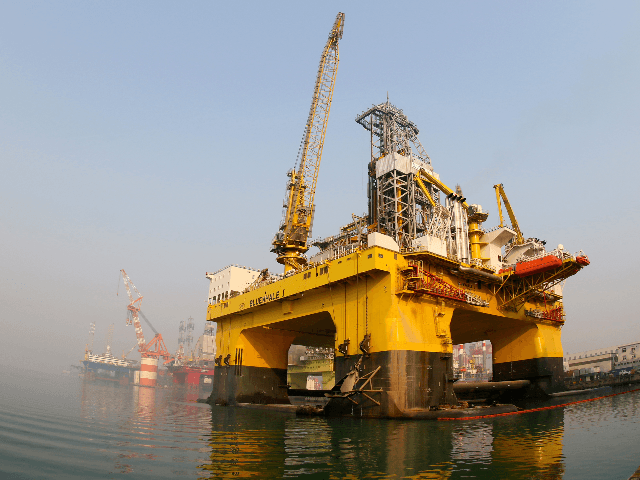China extracted 861,400 cubic meters of natural gas from methane hydrate, known as “flammable ice,” during a one-month trial production in the South China Sea, Chinese state media reported on Thursday.
The gas was allegedly extracted from a depth of about 1,225 meters in an area in the north of the highly contested body of water. The South China Sea is believed to contain some of the world’s most promising deposits of methane hydrate, and China has identified the “combustible ice” as a potential new gas source.
China’s announcement comes in response to the U.S. Navy’s live-fire missile test in the nearby Philippine Sea last week. Deemed by some as a “warning to China,” the missile launches served to strengthen the U.S. military’s ties with regional allies – the Philippines, Vietnam, and others – as part of its Indo-Pacific strategy to curb China’s encroachment on the international waterway.
This test has brought gas extraction from “experimental production” to “trial production,” considered a crucial step in the industrialization of methane hydrate, reports China’s Ministry of Land Resources. The ministry described the trial as a “solid technical foundation for commercial exploitation,” adding that the latest test adopted a novel horizontal well drilling technique. Beijing also claimed that the volume of fuel extracted from the gas hydrates constituted a “new world record.”
China first conducted an experimental gas extraction from methane hydrate in the South China Sea in 2017. Over a 60-day period, the trial produced 300,000 cubic meters of natural gas.
As the world’s largest oil and gas importer, China seeks alternative fuel sources – including gas hydrates – to bolster its energy security amid recent volatility in global oil and gas prices. Energy experts point out that flammable ice extraction remains too costly to be commercially viable. Other issues, such as methane leaking during the exploitation process, mean the “industrialization” of the energy source that China claims to be close to achieving remains a distant reality.
Given this insight, China’s inflated language describing the “success” of the experimental trial as a “new world record” on the fast track to commercialization seems more like bravado in response to the U.S. Navy’s live-fire missile test in the Philippine Sea last week, rather than a truly significant step forward in terms of economic viability in the region.

COMMENTS
Please let us know if you're having issues with commenting.